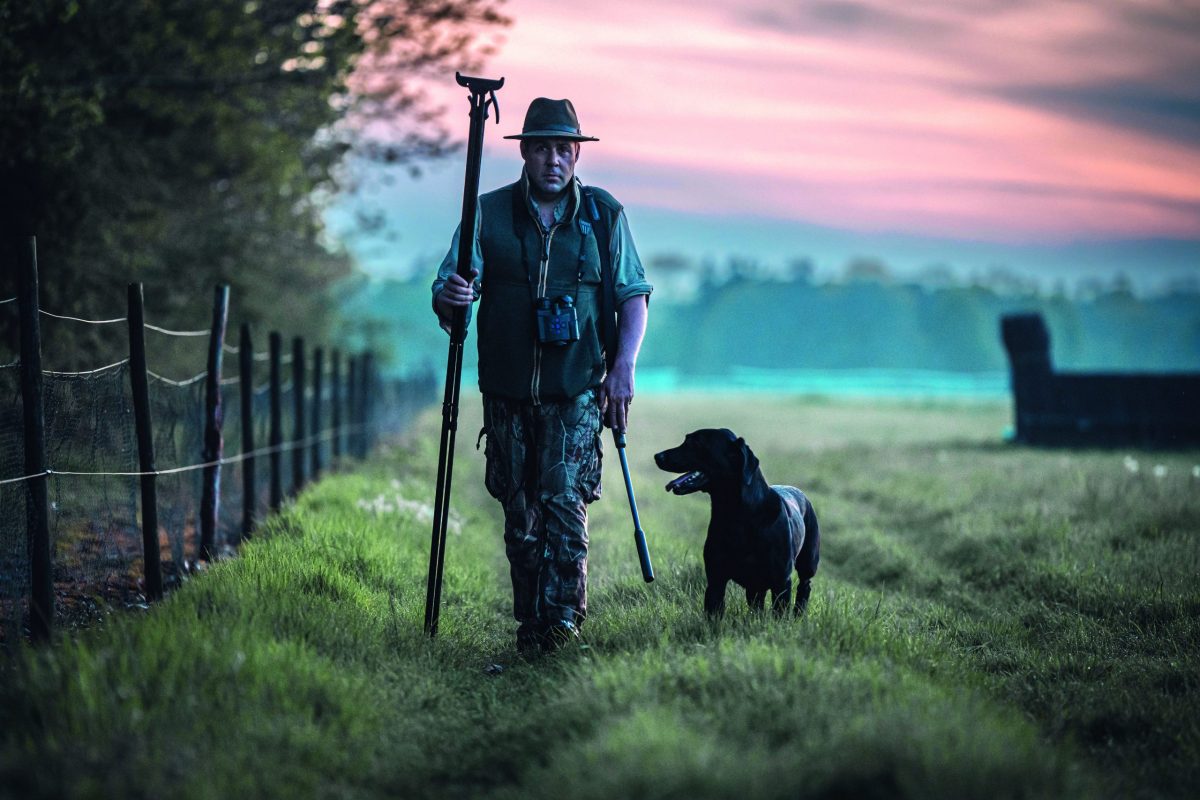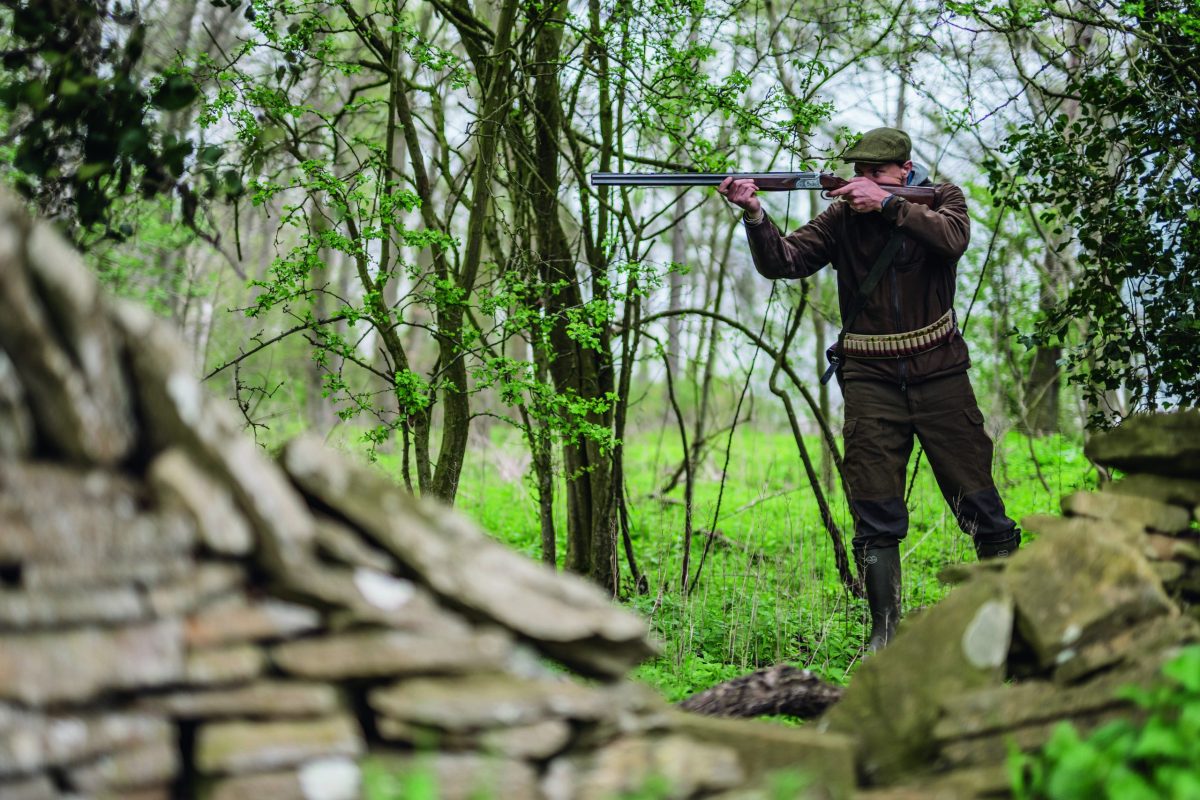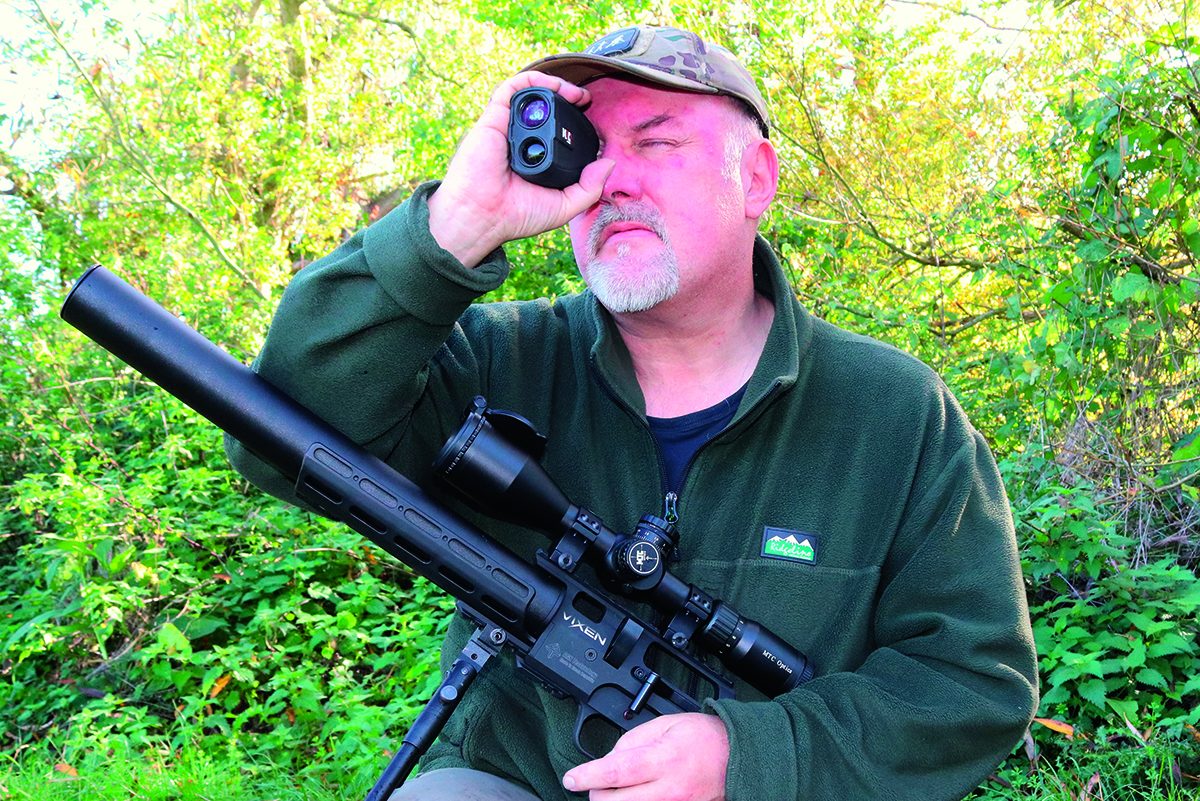Fieldcraft over modern tech – Mat Manning goes back to basics for rabbiting
Mat Manning strips down his kit and replaces modern tech with fieldcraft as he spends an evening stalking rabbits

I have already written about the welcome bounce-back of rabbits on much of my ground following several lean years as a result of haemorrhagic disease. Their return has been quite remarkable and numbers got so high on one of my permissions at the start of the summer that the inevitable happened: the colony was hit by myxomatosis.
One thing is for sure, and that is that disease tends to hit harder in oversized populations, partly because it is easier for it to be transmitted between individuals when concentrations are high. It’s another reminder of how keeping numbers in check can result in a healthier and more stable population.
Thankfully, a couple of the farms I shoot on have remained free from myxomatosis and I am still chipping away at the grass-gobbling pests while harvesting their meat for the table.
Although I have been making my biggest bags by setting up an ambush and picking off unsuspecting bunnies as they venture out to feed, there is nothing more gratifying than adopting a roving approach and trying to stalk within range of a rabbit.
That’s what I’m doing this evening, and the warm conditions seem perfect for it. Pitting your wits against rabbits’ finely tuned senses can be challenging and at times very frustrating, but it’s hard to beat the satisfaction of bagging a bunny when a testing stalk ends in success.
The quarry: rabbits

PEST STATUS: This burrowing rodent undermines banks and field margins, eating grass, cereal and vegetable crops. It also causes damage to lawns and golf courses.
HABITAT: An animal of the open countryside, rabbits usually establish their burrows on hillsides and embankments.
ADDITIONAL INFORMATION: Rabbits are liable to breed very quickly, and their meat is also good to eat.
19:30 – rapid recovery

Although the farm Mat is shooting on this evening hasn’t been hit by myxomatosis so far this summer, it was struck last year.
The dreaded myxy inflicts a miserable and lingering death on rabbits, although it has to be said that it doesn’t appear to be as detrimental to overall populations as haemorrhagic disease. There are usually a few resistant rabbits that manage to make it through and re-establish the colony. That is certainly evident here, and the survivors of last year’s outbreak and their descendants have made a very strong comeback.
As nice as it is to see the rabbits doing well, their numbers have reached a point at which they are causing significant damage. The grass has been nibbled very low around many of the field margins and their burrowing is becoming a serious problem. Banks are becoming undermined and large holes in fields pose a danger to livestock.
Reducing damage is the main reason why the farmer wants to control the rabbits here, although Mat will also be rewarded with their free-range meat if he is successful. And, as previously mentioned, keeping numbers at a lower level tends to result in a healthier overall population.
19:40 – travelling light

One of the most appealing things about going stalking is that you don’t need a lot of kit for it. The only essentials are an airgun, pellets and a bag to carry your shot rabbits. There are a few handy accessories that can prove useful without overburdening you though, and these include a knife for paunching any bunnies you manage to bag and a laser rangefinder for accurately gauging the distance of your shots.
Mat is travelling very light this evening, with no decoys, hide poles or shooting sticks to bog him down. His gun choice is the Weihrauch HW100, sub-12 ft-lb in .177 calibre. This airgun is very quiet so it shouldn’t put rabbits on edge as Mat makes his way around the fields.
Rather than his usual backpack, Mat is carrying a gamebag, which he hopes will be holding a few rabbits by the end of the evening. This bag used to have leather straps and shiny metal buckles for fastening the top flap, but Mat has sliced them off with his knife to prevent them from jangling and spooking his quarry as he closes in for a shot.
Expert tip – read their body language
Rabbits will usually let you know when you can move in and when you need to keep dead still as you close in for the shot. The way to work it out is to read their body language.
A rabbit that has its head down to feed is relaxed and feels safe, which means you can continue to creep towards it. When a rabbit sits up with ears erect and whiskers testing the air it is on high alert and you need to stop. Wait for it to settle and begin to feed again, and it should be safe to resume the stalk.
19:55 – ranging in

There were no rabbits above ground in the first field that Mat stalked through. This is not unusual because however careful you try to be, sounds of your arrival will send rabbits running to their burrows.
The next field looks more promising though. After passing through a gateway, which was thankfully open and therefore permitted a quiet passage, Mat spots two rabbits out feeding and both appear to be unaware of his presence.
Mat slips his rangefinder out of his pocket, frames the closest rabbit in its viewfinder and pings its range at 70m.
That is obviously way too far away for a shot, but Mat tracks down the hedgerow with his rangefinder until he ranges a gate at around 40m from where he is standing.
He now knows that if he can creep as far as that gate without being detected, and the closest rabbit remains more or less where it is, he will be about 30m from his target and comfortably within range.
Spotting rabbits and working out where he needs to be for the shot is the easy part of the job for Mat, as he now needs to sneak to his firing point without being rumbled.
20:05 – first chance

Stalking within range of feeding rabbits is not as easy as it sounds. These mammals have highly evolved senses that enable them to avoid predation by foxes, birds of prey and humans. Their eyesight isn’t great, but they have remarkable hearing and a nose that can pick up on suspicious smells from an incredible distance if the wind is in their favour.
The breeze is only light, but Mat has set out on a route that keeps it to his face. That means the air is carrying all the scents he has picked up from the human world away from his quarry’s nostrils and not towards them.
There is a dicey moment as the closest rabbit sits bolt upright and begins to test the air with its twitching whiskers. Mat freezes dead still until the rabbit relaxes and returns to feeding before moving slowly onwards.
After several testing minutes, Mat eventually reaches the mark by the tree. The rabbits have remained in their original feeding spot so the nearest one is within striking distance as Mat settles into a kneeling position and frames it in his sight picture.
It wasn’t a very long stalk, and the ground was not particularly difficult going, but the exertion and excitement of closing down those final tricky metres has left Mat’s pulse pumping. He needs to take a moment to compose himself before he pulls the trigger.
20:10 – in the bag
It didn’t take long for Mat to calm down for the first shot. After creeping comfortably within range, and then spending a moment to catch his breath, the shot was a mere formality and concluded with a rabbit hit cleanly in the head. The crack of the impacting pellet was too much for the other bunny to tolerate, and it immediately took to its heels and vanished into the undergrowth.
The important thing is that Mat has accounted for his first rabbit of the session. He has a quick check to make sure that he hasn’t failed to notice any other bunnies lingering out in the field and, when he is sure the coast is clear, walks in to retrieve his prize.
Holding the rabbit by its forelegs, Mat squeezes down the length of its belly to empty its bladder of any urine that could taint the meat. Paunching duties will be carried out at the end of the evening, so in the meantime the rabbit goes into the game bag so Mat can remain hands-free as he continues to make his way around the fields.
20:50 – prime time

Rabbits tend to venture above ground to feed during the last hour or two before sunset through the summer months. This is partly down to the fact that there are fewer people out and about towards the end of the day. Like a lot of wild animals, rabbits also don’t like to be out in the full heat of the midday sun.
Mat has timed this session to coincide with the most productive part of the day and intends to shoot until he runs out of light. The plan is to drift slowly around the field margins, hopefully picking off the odd rabbit as he makes his way around the farm.
These rabbits aren’t stupid, and Mat’s first shot is followed by two failed stalks. One was the result of a clumsy footfall and the other was pure bad luck as a buzzard swooped low over the field, sending the rabbits bolting before Mat was within range.
The key to successful stalking is to avoid getting frustrated when things go wrong. Mat knows this and doesn’t force things when the next chance arises – a slow approach always beats a hurried one.
Everything goes to plan this time. Mat has managed to sneak within striking distance and another shot is on. Stalking rabbits is seldom easy, but it is incredibly rewarding when you get it right.
Mat’s gear
GUN
Weihrauch HW100
hullcartridge.co.uk
SCOPE
Hawke Vantage SF 3-12×44
hawkeoptics.com
AMMO
Rangemaster Sovereign
daystate.com
RANGEFINDER
Hawke Vantage
hawkeoptics.com
BAG
Jack Pyke Duotex Game Bag
jackpyke.co.uk
GLOVES
Macwet Long Cuff
range-right.co.uk








